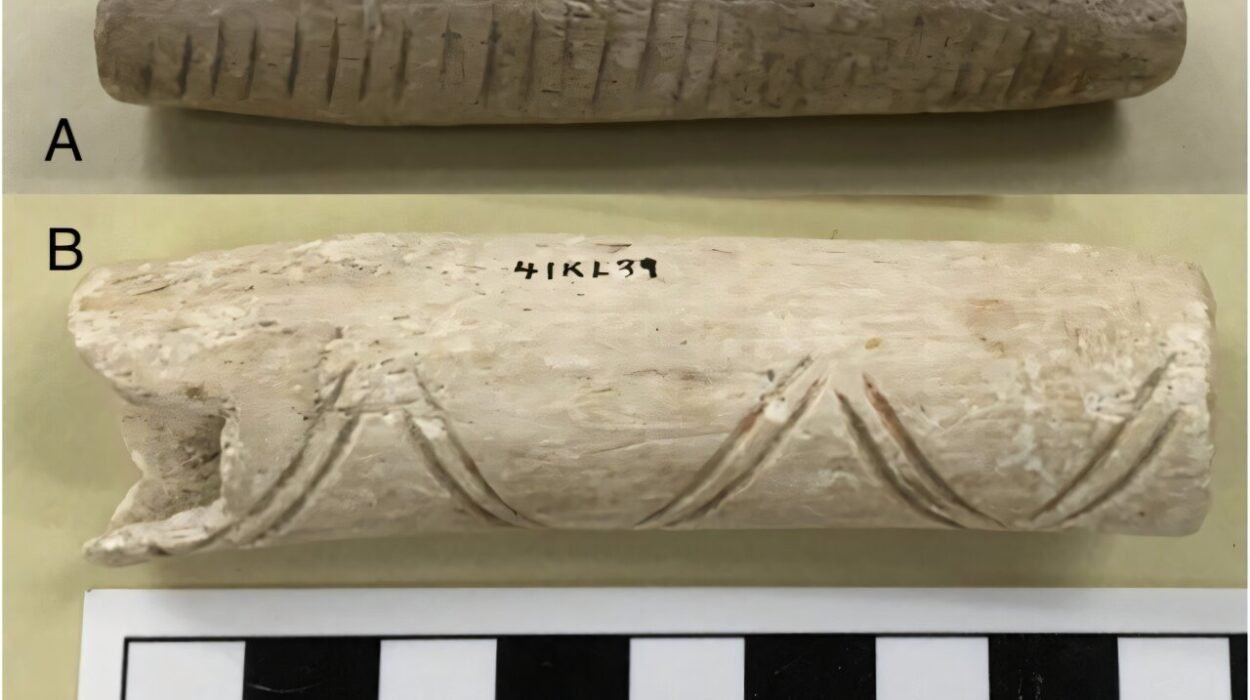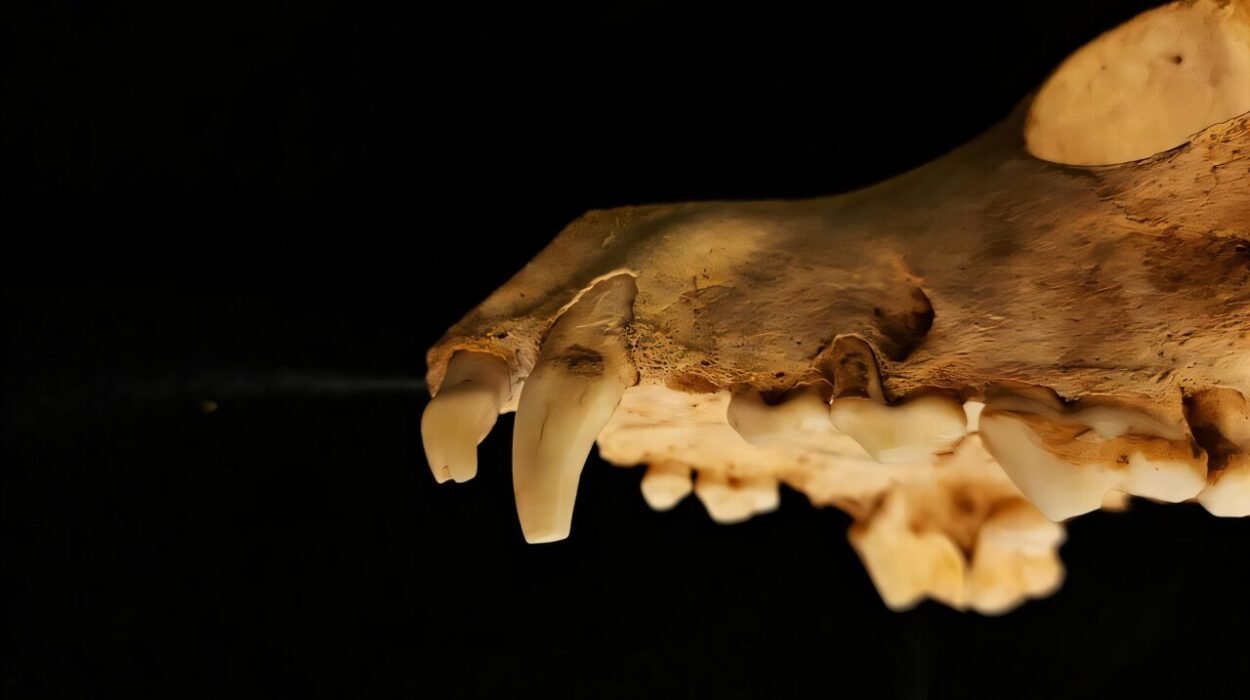In a quiet cemetery beneath the cobblestone streets of Rouen, France, the skeletal remains of a small child lay undisturbed for nearly two centuries. Buried among the 53 individuals recovered from the Saint-Gervais parish cemetery, one grave—designated as individual SP5—would whisper an unsettling story across time. Recent research published in the International Journal of Paleopathology has now unearthed that story, and it’s one that interweaves suffering, desperation, and the haunting legacy of early medical experimentation.
The child, believed to be only three to four years old at the time of death in the mid-19th century, bore the unmistakable scars of two devastating illnesses: rickets and scurvy. These diseases, caused by deficiencies in vitamin D and vitamin C respectively, left visible deformities in the skeleton. Bowed limbs, weakened bones, and porous, fragile tissue marked the child’s short life—a life shaped not only by malnutrition but also by the prevailing medical beliefs of the time. And then, there was mercury. Lots of it.
What makes this particular discovery both intriguing and tragic is not only the diagnosis of disease but the presence of extraordinarily high levels of mercury in the child’s bones and teeth. Using a suite of cutting-edge techniques—physical anthropology, micro-CT scans, X-ray fluorescence, and cold vapor atomic absorption spectrometry—researchers Alexandra Zinn and Dr. Antony Colombo pieced together a narrative of both illness and attempted healing. Their analysis did more than confirm the diseases; it illuminated the eerie glow of mercury exposure in the very architecture of the child’s skeleton.
Today, mercury is widely recognized as a hazardous, highly toxic heavy metal. Yet for centuries, it was revered—magical even. In ancient medical traditions across China, Egypt, Greece, and the Islamic world, mercury held a place of honor. Its gleaming, fluid form fascinated physicians and alchemists alike. It was used to treat everything from skin conditions to sexually transmitted diseases, often with dire consequences. But it wasn’t until the industrial revolution that its medical use became increasingly systemic—and, sometimes, deadly.
The 19th century was an age of duality: unprecedented scientific progress on one hand, and rampant public health challenges on the other. Cities swelled with new factories and people seeking work. Industrialization introduced sanitation infrastructure, vaccinations, and new health practices. Infant mortality began to decline in some areas. But these improvements came unevenly, often bypassing the poor and vulnerable. Crowded housing, polluted air, and unsafe working conditions led to the rise of urban diseases, particularly among children.
Rickets and scurvy were among the most prominent of these ailments. These were not rare anomalies; they were common afflictions of the urban underclass. With limited access to fresh air, sunlight, and nutrient-rich food, children in rapidly industrializing cities like Rouen were uniquely vulnerable. Rickets curved their legs and softened their skulls. Scurvy weakened their gums, caused bleeding, and impeded bone development. These diseases were devastating on their own—but the treatment could be just as harmful.
In the case of SP5, the presence of mercury in the remains could not be attributed to natural contamination. Rouen’s geological makeup lacks the types of mercury-bearing minerals that could leach into buried bones. Nor could nearby industries explain it. While certain trades—mirror making, hat production, and gilding—did use mercury, they were not located near the burial site, and there is no evidence that this child was exposed occupationally. Moreover, environmental mercury contamination in fish and other foods did not become a public health concern until the 20th century. The concentration levels found in SP5 were far too high and localized to be anything but intentional.
The conclusion? This child was given mercury as medicine.
To modern eyes, this may seem barbaric. Yet in the 19th century, mercury-based compounds like calomel (mercurous chloride) were widely prescribed. They were believed to draw out disease from the body, especially conditions thought to involve “impurities of the blood.” Mercury was the go-to treatment for syphilis, skin diseases, and even tuberculosis. It was administered in pills, ointments, and inhalants. The logic behind its use was deeply rooted in humoral theory—the belief that the body’s health depended on the balance of four fluids, or “humors.”
The side effects of mercury treatment were horrendous. Patients endured dizziness, profuse sweating, tremors, hallucinations, violent diarrhea, and even asphyxia. Tooth loss was common. One telltale symptom of excessive mercury exposure was “mercurial glossitis”—an excruciating inflammation of the tongue. Physicians of the time saw such reactions not as warning signs, but as encouraging proof that the treatment was “working.” In fact, excessive salivation was often taken as a positive sign, an indication that the poison had begun to purge the illness from the patient’s system.
This grim logic likely shaped the last months of SP5’s life. The mercury levels preserved in the child’s bones and teeth indicate sustained and possibly escalating doses in the final stages before death. The tiny body was quite literally saturated in metal. It is plausible, even likely, that the child died not from the diseases alone but from the very treatment administered to cure them.
So why mercury for rickets and scurvy? Historical records suggest that while mercury was primarily associated with treating venereal and skin conditions, its use was not strictly limited. Medical treatments were often generalized, overlapping in application. Physicians at the time lacked both diagnostic tools and a full understanding of nutrition-related diseases. To them, rickets and scurvy may have appeared similar to other diseases that responded (or seemed to respond) to mercury. In desperation, and armed with incomplete knowledge, doctors turned to what was available.
This case also highlights the nuances of French industrialization. Unlike in the UK, where the industrial revolution was rapid and structurally transformative, France underwent a more gradual and politically fraught transition. Revolutions, wars, and social upheavals characterized the 19th-century French experience. In this landscape, public health infrastructure lagged behind. While bioarchaeologists in Britain have extensively studied child health during industrialization, France’s record is patchier. Zinn and Colombo’s work marks a significant contribution to filling that void.
Their previous study in 2021 used a paleo-epidemiological approach to trace the historical burden of rickets in transitional France. That research pointed to mercury as a common medical response. With the discovery at Rue Thubeuf, they sought to verify whether mercury could leave a detectable signature in skeletal tissues—and whether that signature could tell a broader story. It could, and it did.
The story of SP5 is not just one of illness, but of the shifting tides of medical knowledge, of the interplay between environment and health, and of how societal transformations leave marks not just in history books, but in bone.
At a deeper level, this discovery compels reflection on the ethics of medicine, both past and present. The case reminds us that medicine is always evolving. Treatments once hailed as miraculous can, in hindsight, appear disastrous. The same may someday be said of certain modern interventions. Every breakthrough carries risks, every cure the potential for unintended harm. The bones of SP5, preserved in silence for nearly two centuries, are now speaking this truth with undeniable clarity.
For the bioarchaeologists, the work continues. The Saint-Gervais cemetery still holds many secrets. Each excavation brings to light another fragment of how our ancestors lived, suffered, and tried—against overwhelming odds—to heal. The remains of this child, fragile yet resolute, connect us to a moment in history when science was just beginning to find its footing, stumbling in the dark, guided by both reason and desperation.
As researchers refine their tools and methods, more stories will emerge from the soil—stories that bridge the gap between medical history, human experience, and scientific discovery. In telling the story of SP5, Zinn and Colombo have not only unearthed a specific tragedy, but also contributed to a broader understanding of the cost of progress. The past, it seems, is not so silent after all. It lingers in our bones, waiting to be understood.
More information: Alexandra Zinn et al, Archeometric detection of mercury: A paleopharmacological case study of skeletal remains of a child with vitamin deficiencies (Rouen, France, late 18–19th centuries), International Journal of Paleopathology (2025). DOI: 10.1016/j.ijpp.2025.02.006






